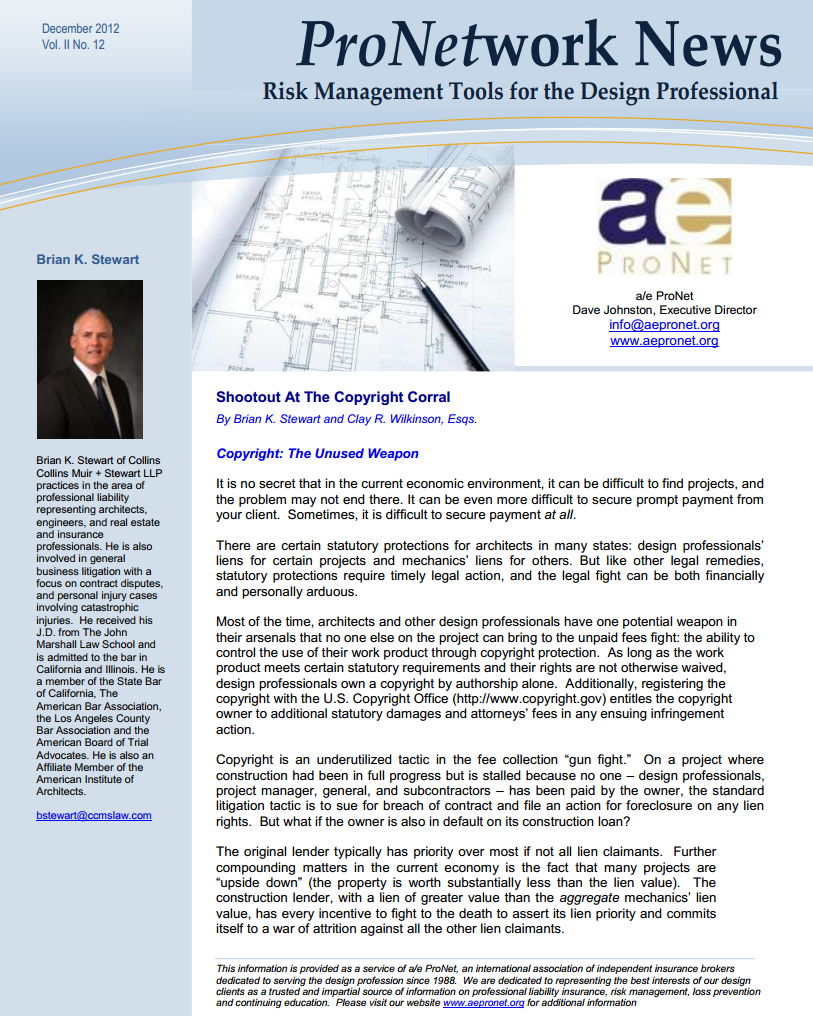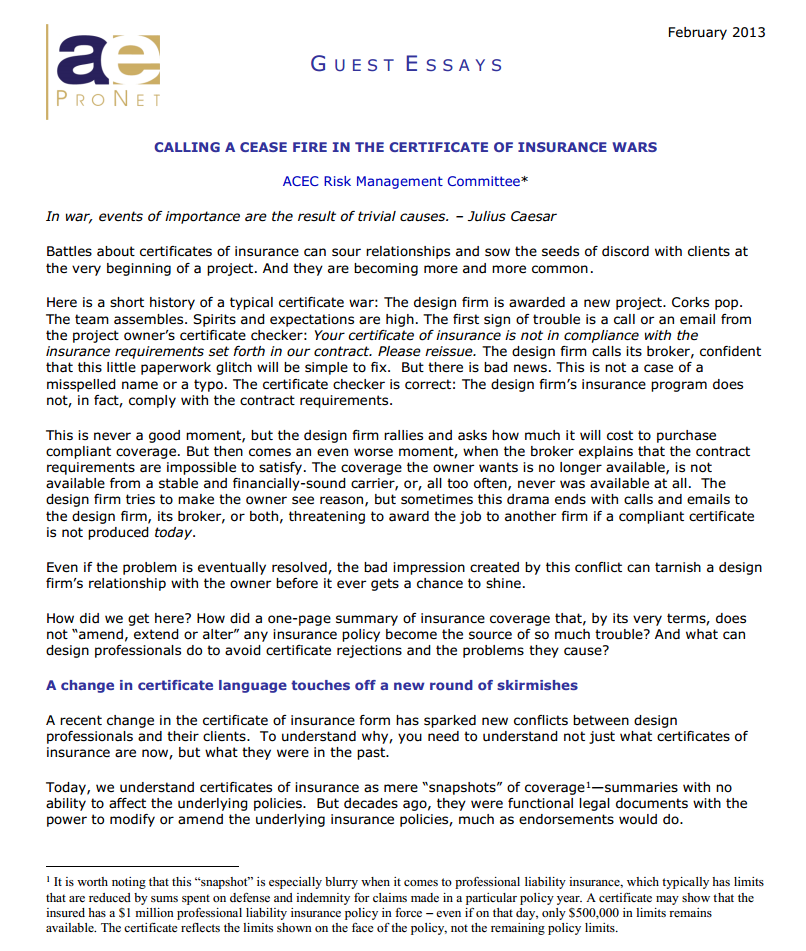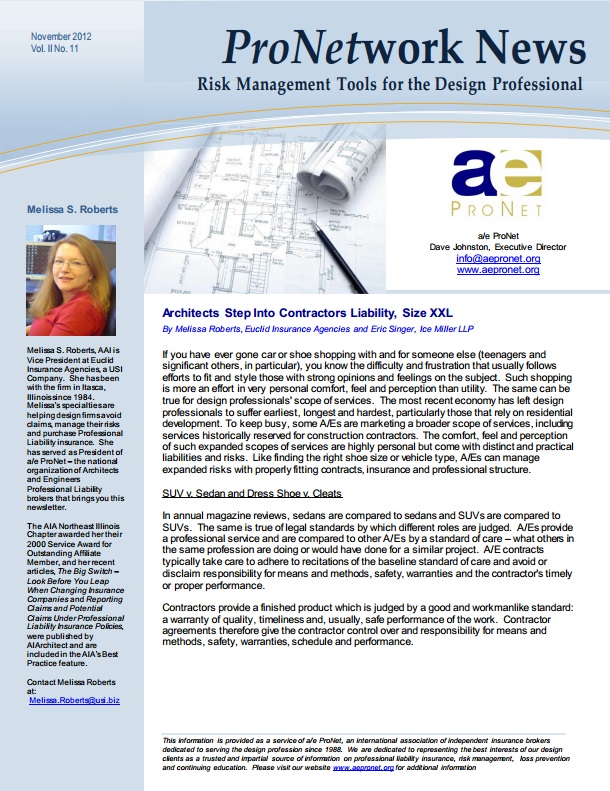It is no secret that in the current economic environment, it can be difficult to find projects, and the problem may not end there. It can be even more difficult to secure prompt payment from your client. Sometimes, it is difficult to secure payment at all.
There are certain statutory protections for architects in many states: design professionals’ liens for certain projects and mechanics’ liens for others. But like other legal remedies, statutory protections require timely legal action, and the legal fight can be both financially and personally arduous.
Most of the time, architects and other design professionals have one potential weapon in their arsenals that no one else on the project can bring to the unpaid fees fight: the ability to control the use of their work product through copyright protection. As long as the work product meets certain statutory requirements and their rights are not otherwise waived, design professionals own a copyright by authorship alone. Additionally, registering the copyright with the U.S. Copyright Office entitles the copyright owner to additional statutory damages and attorneys’ fees in any ensuing infringement action.
Copyright is an underutilized tactic in the fee collection “gun fight.” On a project where construction had been in full progress but is stalled because no one – design professionals, project manager, general, and subcontractors – has been paid by the owner, the standard litigation tactic is to sue for breach of contract and file an action for foreclosure on any lien rights. But what if the owner is also in default on its construction loan? Continue reading “Shootout At The Copyright Corral”







